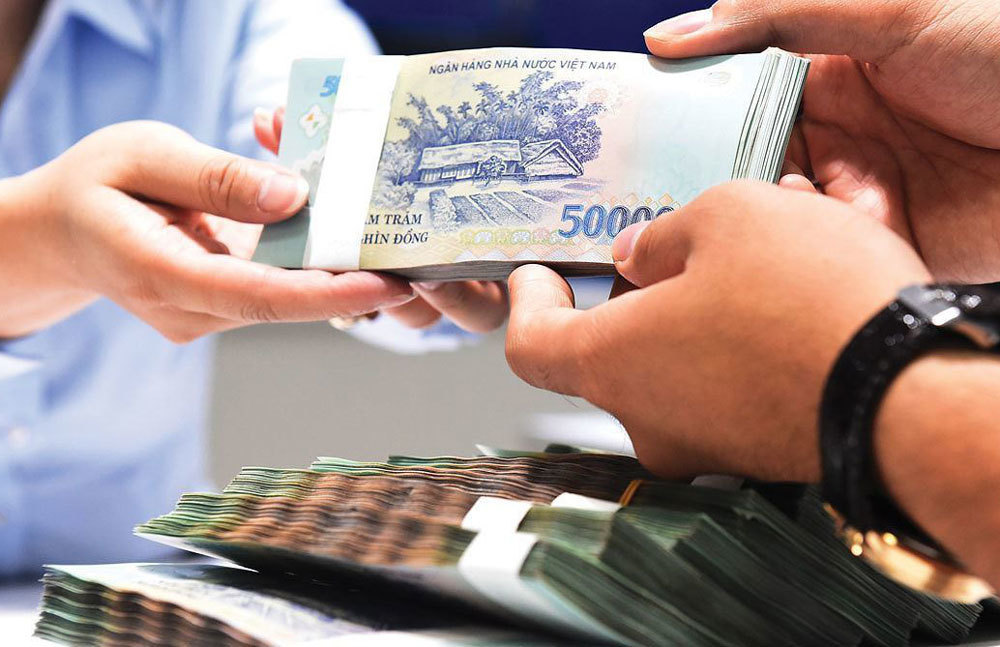
Some commercial banks eased deposit interest rates slightly in early July. Sacombank cut interest rates by 0.2 percent for 1-36-month deposits, and VP Bank by 0.18-0.2 percent.
According to General Statistics Office (GSO), the deposit interest rates were stable in H1 2021 after decreasing sharply in 2020.
The interest rates are 0.1-0.2 percent per annum for demand and less-than-1-month deposits; 2.85-4 percent for 1-month- and less-than-3-month deposits; 3-4 percent for 3-month, 4-6.25 percent for 6-month, 4-6.4 percent for 9-month and 4.7-6.8 percent for 12-month deposits. The highest rates of 5-7 percent are applied to 13-36 month deposits.
Statistics show that the deposit interest rates decreased by 1.5-2.5 percent over the last year. Many banks now pay 3.1-3.3 percent per annum only for 1-month deposit, the lowedt in the last 10 years.
The Vietnam Association of Financial Investors (VAFI) has proposed gradual reduction of Vietnam dong deposit interest rates to zero percent. It says the interest rate is being used in many developed economies, while minus interest rates (banks collect fee for deposits) is being applied in some other countries.
The policy keeps the lending interest rates low, at 2-5 percent per annum, helping to stimulate the development of the business system and stock market and ensure social welfare for low income earners.
However, the proposal has not been advocated by experts, who believe that it is not feasible to apply the zero percent interest rate policy now.
They warn that such low interest rates would prompt depositors to draw deposits from banks and pour money into other investment channels. This will cause adverse effects to the economy.
| Commercial banks have reported a sharp fall in deposits as interest rates are now at a 10-year low and people seek other investment channels. |
The banking system may be put in danger of lacking liquidity and the economy would lack capital for production, business and consumption. In this case, clients will have to compete with each other to get bank loans, which will push the lending interest rates up. Even if lending interest rates don’t increase, unofficial costs that businesses have to pay to get loans will increase.
Analysts said that banks cannot slash deposit interest rates any further. If they do, money will leave the banking system and head for other investment channels, including securities, real estate, gold, cryptocurrency and usury.
Meanwhile, VN Direct predicted that the deposit interest rate would increase by 0.25-0.3 percent in H2 because of high credit demand, higher pressure on the inflation. In principle, banks need to maintain attractive interest rates to attract more deposits as they have to compete with other investment channels.
According to Vietcombank Securities, the deposit interest rates decreased by 0.3 percent in H1 and have been stable at low levels. It said that the interest rates would go flat in H2 or increase slightly by 0.1-0.2 percent.
As for lending interest rates, they are expected to decrease further, but they will not be the same throughout the banking system. State Bank of Vietnam recently asked banks to slash interest rates in July to help businesses overcome difficulties caused by Covid-19.
Deposits drop
According to the State Bank of Vietnam (SBV), while some banks attracted big deposits with a growth rate of 10 percent in H1, others reported a decrease in deposits, though their lending still increased. ABBank, for example, reported a decrease of 7.4 percent, SeA Bank 4.7 percent, NCB 4 percent, Saigonbank 0.3 percent and PG Bank 0.2 percent.
While the mobilized capital growth rate from the public was the lowest in the last nine years, the capital mobilized from economic institutions was higher.
As of the end of May, the deposits from economic institutions had reached VND5.03 quadrillion, up by 3.26 percent over late 2020, a 5-year record high. Meanwhile, the deposits from the public had reached VND5.27 quadrillion, up by 2.6 percent.
This was the first time the deposit growth rate from economic institution exceeded the growth rate from the public in January-May.
Prior to that, SBV reported that deposits by economic institutions at VND5.26 quadrillion were, in the first four months of the year, up by 2.05 percent, the lowest growth rate compared with the same period of previous years. The figure was lower than the growth rate of 2.34 percent in deposits from the public.
But the situation changed after May with deposits from businesses increasing by VND59.121 trillion, which accounted for four-fifths of the total money additionally deposited at the banking system.
The sharp rise in businesses’ deposits was attributed to the impact of the Covid-19 pandemic. The fear of risks prompted businesses to deposit money at banks.
Meanwhile, deposits from the public are going the opposite way with the growth rate having slowed down since 2016.
The growth rates of deposits from the public decreased from 11.04 percent in 2016 to 9.39 percent in 2017, 7.5 percent in 2018, 6.84 percent in 2019, and 4 percent in 2020.
Low deposit interest rates were an important cause for this.
Tuan Dung

Real estate developers circumvent laws to mobilize capital
Some real estate developers engage in dishonest practices: One apartment is sold to many people. Developers receive deposits and

Stock market continues to draw new investors
Cash flow from individuals and businesses deposited in banks at low interest rates has been increasing gradually, while capital mobilization in the securities sector has also been quite active.
take reservations though the legal status is unclear.